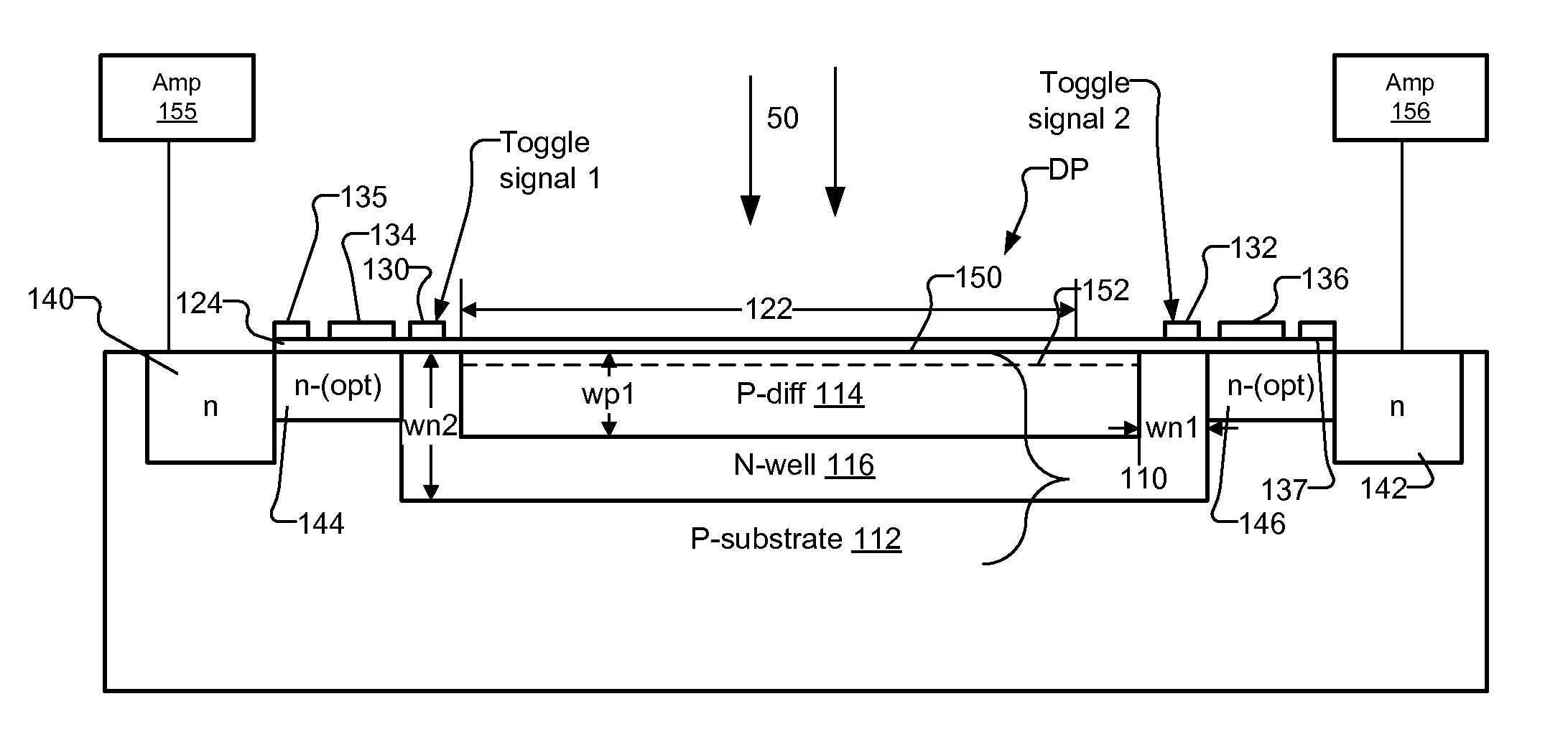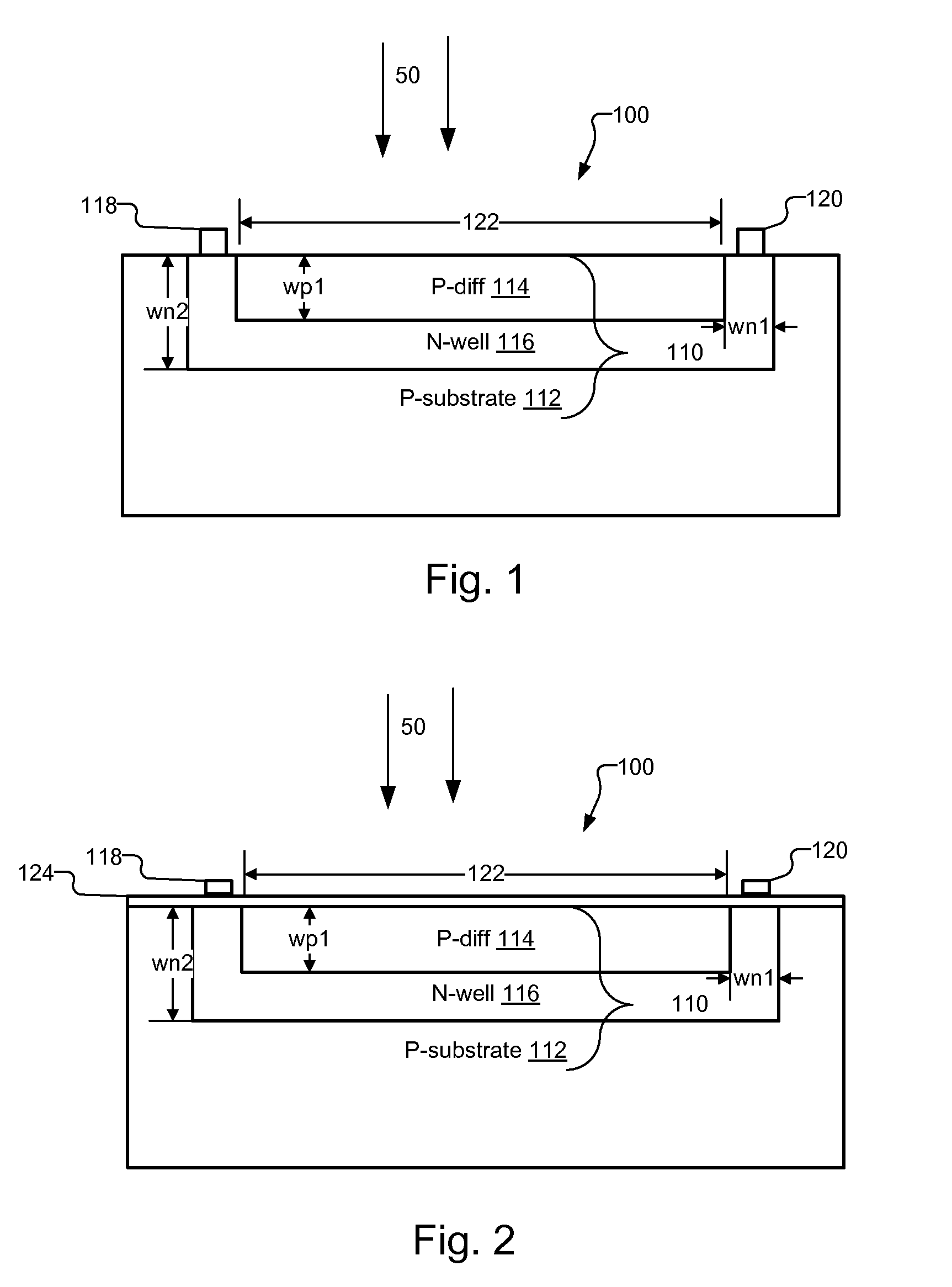Drift Field Demodulation Pixel with Pinned Photo Diode
a technology of pixel and photo diode, which is applied in the direction of material analysis, using reradiation, instruments, etc., can solve the problems of increasing the power consumption of the sensor, affecting the thermal heating of the sensor, and the dark current noise of the sensor, so as to reduce the power consumption, improve the optical sensitivity, and overcome the complex pixel design
- Summary
- Abstract
- Description
- Claims
- Application Information
AI Technical Summary
Benefits of technology
Problems solved by technology
Method used
Image
Examples
Embodiment Construction
[0028]In the following descriptions, we use just p doped substrates in order to keep the descriptions clear and well-structured. However, the devices are not limited to p-doped substrates. In the case that n-doped material is used as substrate, all doping concentrations and considerations of the potential distributions are reversed, which, however, does not mean that any functioning of the device would be restricted.
[0029]FIG. 1 shows the basic idea of a gate-less static drift field pixel 100 based on a pinned photodiode (PPD) structure. A pnp structure 110 is created, which is fully depleted when the two p-layers, p-doped substrate 112 and p-doped diffusion layer 114 are connected to the same potential and the sandwiched n-well layer 116 is set to a potential greater or equal the built-in voltage.
[0030]In the case that two different voltages are applied to the left (low potential) contact 118 and right (high potential) contact 120 to the n-well layer of the PPD structure 110, a con...
PUM
 Login to View More
Login to View More Abstract
Description
Claims
Application Information
 Login to View More
Login to View More - R&D
- Intellectual Property
- Life Sciences
- Materials
- Tech Scout
- Unparalleled Data Quality
- Higher Quality Content
- 60% Fewer Hallucinations
Browse by: Latest US Patents, China's latest patents, Technical Efficacy Thesaurus, Application Domain, Technology Topic, Popular Technical Reports.
© 2025 PatSnap. All rights reserved.Legal|Privacy policy|Modern Slavery Act Transparency Statement|Sitemap|About US| Contact US: help@patsnap.com



